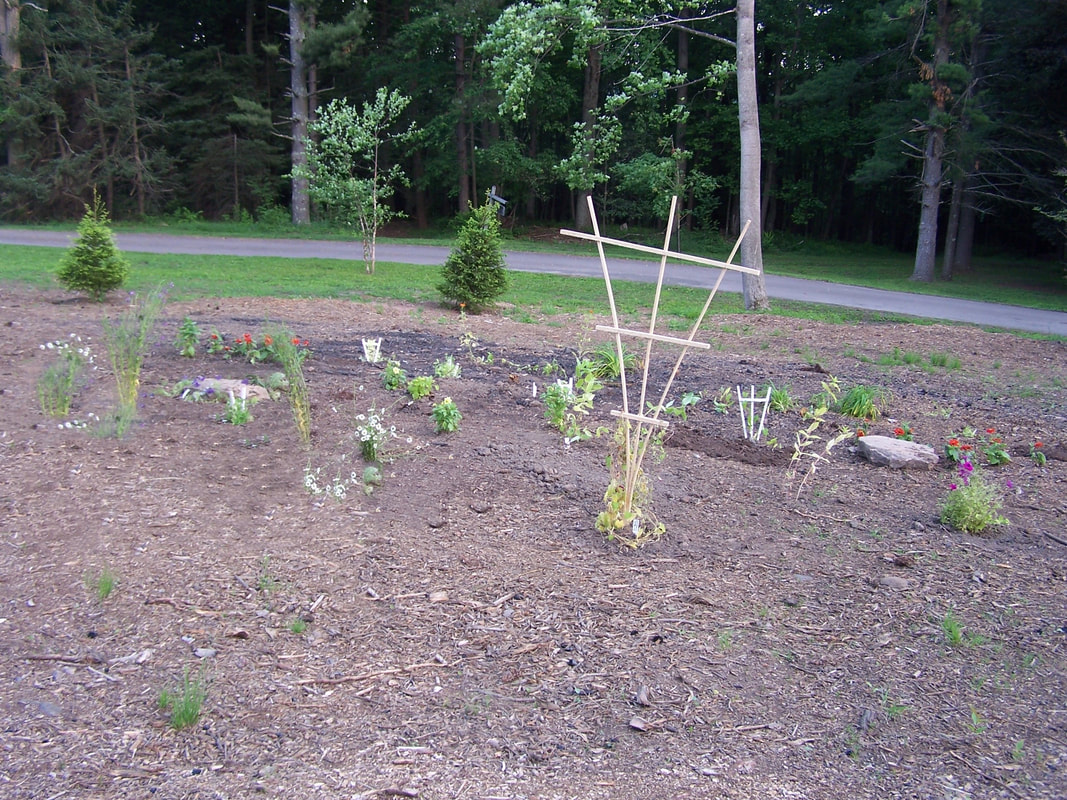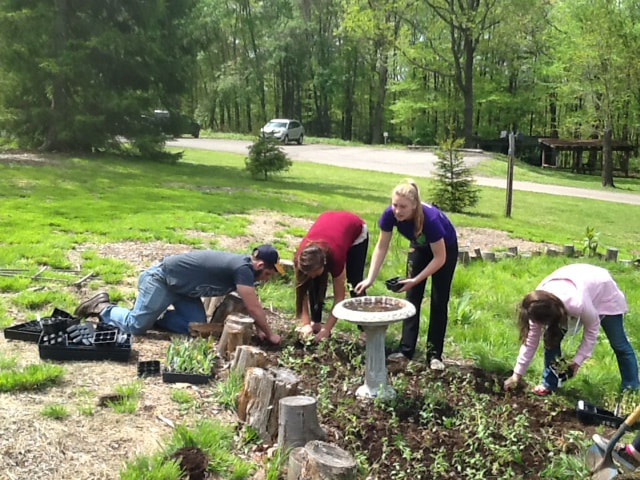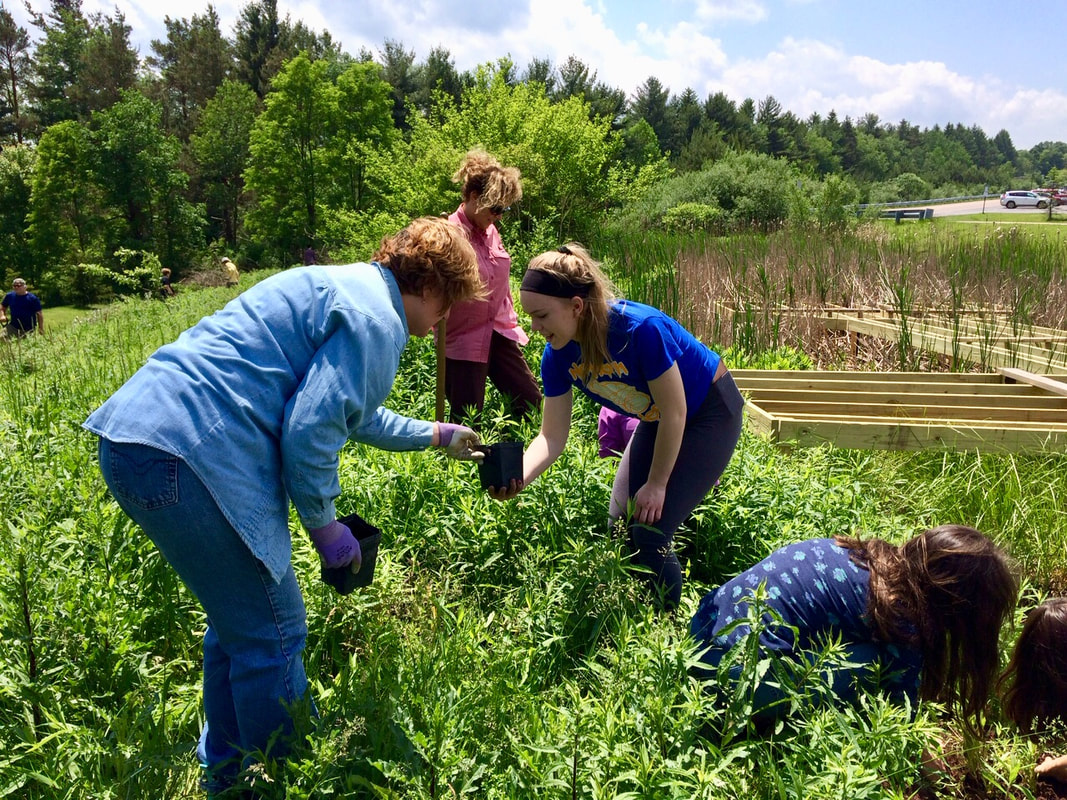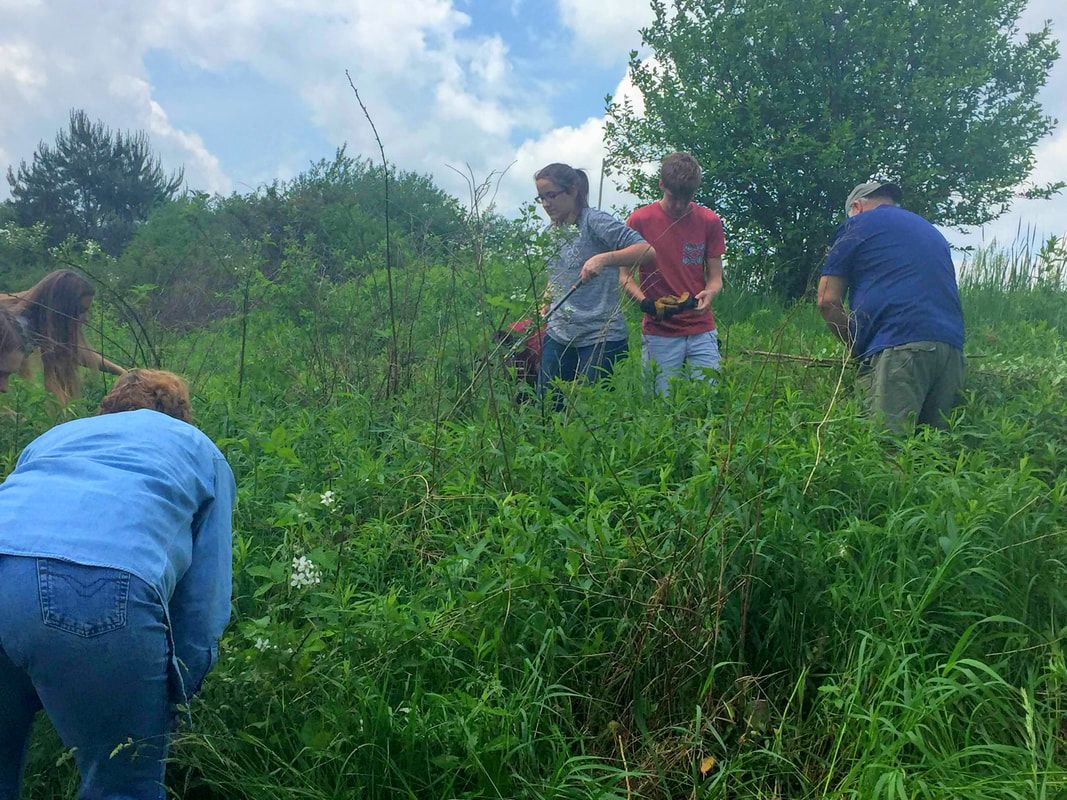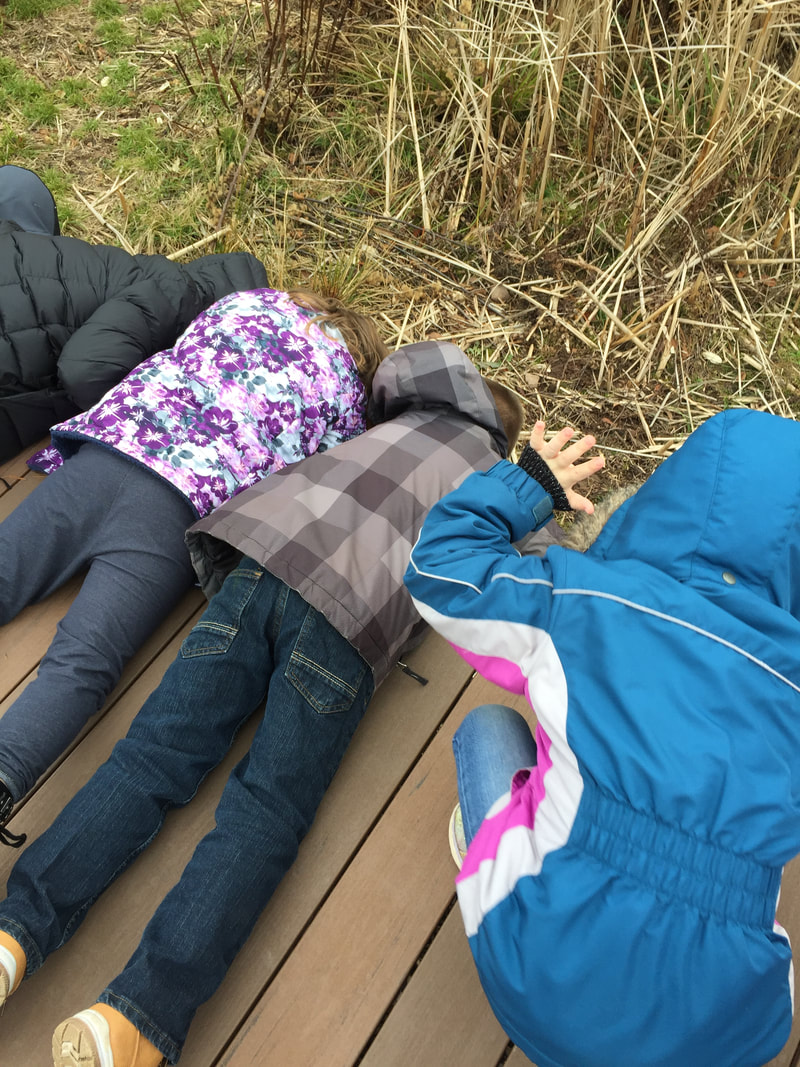Native Meadow Planting
- Description: Following hurricane Sandy, several damaged trees were removed from an area near the front of the main building at HEEC, leaving a large open area. During the fall of 2014, a meadow area near HEEC was plowed to be used as an agricultural field. HEEC staff decided to use a section of the newly opened area to create a native meadow to provide food and habitat for native species and for educational purposes. During the spring of 2015, the soil was prepared and a few native species were added to the meadow. Over the following year, a border was placed around the meadow to separate it from the mowed grassy area and additional plants were added. Students assisted with the creation of the space and planting. The meadow is now used in various lessons when students study habitats, plants, and pollinators. For example, high school biology students complete an ecological scavenger hunt that includes a stop at the meadow where they look for examples of seeds, berries, and seed pods on the plants.
- Grade Level: 6 - 12
- Number of Students Involved: 50
- Date: Spring of 2015 through Spring of 2016
Wetland Restoration
- Description: HEEC partnered with nearby Northern Garrett High School to restore a constructed wetland in an area between the two facilities. HEEC assisted with the planning and implementation of the restoration and provided financial assistance. Students assisted with as much of the restoration efforts as possible. Student activities included removal of invasive species, planting native species to increase biodiversity, constructing a viewing platform, and assisting in the installation of an informational sign. The wetland is utilized by students at Northern Garrett High School (NGHS), Northern Middle School, and HEEC for outdoor learning experiences.
- Grade Level: 9 - 12
- Number of Students Involved: 50
- Date: Fall 2017 through Fall 2019
|
|
State Amphibian Project
- Description: In November 2018, HEEC partnered with an eighth grade English teacher at Southern Middle School to involve students in a project centered around the long-tailed salamander. The final goal of the project was to propose a bill to designate the long-tailed salamander as the official state amphibian. Students began by researching the long-tailed salamander along with amphibians in general to determine their needs, ecosystem roles, and potential threats. Students wrote informative letters to Senator George Edwards that they were able to hand deliver and then speak with the senator about what they hoped to accomplish. On March 7, 2019, the students, their teacher, and Jason Shank and Samantha Stumpf from HEEC traveled to Annapolis to attend the Senate Committee hearing on the bill to name the long-tailed salamander as a state symbol of Maryland. Four students shared what they had learned from their research to encourage the passing of the bill. Although the bill was not brought to vote, students learned much about the importance of a native amphibian, its habitat needs, and the legislative process that can aid in the protection of species.
- Grade Level: 8
- Number of Students Involved: 31
- Date: November 2018 through March 2019
An informative and persuasive sheet created by students to share with the Maryland Senate.
Press release describing the project and student involvement.
The proposed bill by Senator Edwards.
Thank you notes written by students who participated in the project.
